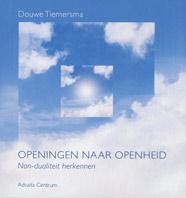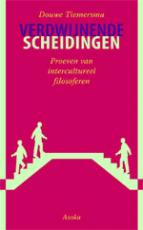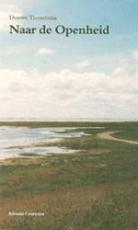Advaita Post 09 -06 - There is a recognition of the origin...

Advaita Post 9 No 6 (April 1, 2008)
---There is a recognition of the origin beyond and before the 'spiritual' phenomena --

Naturally unnatural,
Impossible reality,
Extremely dynamic silence,
Continually developing origin,
Unity in multiplicity:
What a miracle;
What a joy!
Brain and awareness
Recently there have been many messages and questions about the relationship between the brain and mind/consciousness. To begin with, it should be noted that the notions of “I”, soul, mind and consciousness are often thrown together into one pile and this can create confusion. Let’s begin by connecting to this vague usage of these words. Then later we can come to the distinctions. The text here below is also intended for people outside the circle of the Advaita Post subscribers. The style is therefore adapted accordingly.
In the dominant view consciousness doesn’t have a status of its own because the only recognized reality is that of matter. If consciousness is recognized as a reality, it is still dependent, as derived from that of matter. Consciousness is a secondary effect of the brain. If the brain no longer functions, the person is deceased and there is nothing left of the “I” and consciousness. This opinion is expressed not only by neurophilosophers such as Daniel Dennett, but also by many other authors. It is taken as a matter of fact in most texts.
This assumption of materialism, in one form or another, is in our time very strange and irrational. Philosophically, materialism is at best only one of the metaphysical options. Such an option isn’t really a stand to take, because materialism does not agree with general experience, because it is empirically untenable and because consciousness by definition is outside the object world of science.
The philosophical option
If claimed that consciousness is only a secondary effect of matter (the brain), then it gets a subordinate place in relation to matter. Therefore authors refer to (psycho) neurological research, and to modern science in which distance and analytical observation are coupled together with rationality. This methodological approach has offered much, but its limits have been shown in many places. This is clearly the case in modern physics where research encounters fundamental limits. In philosophy, Kant described the limits of empirical knowledge so as "to make room for religion". Many philosophers have shown how much in art, communication and other areas truth is sought and found. The assumptions of modern materialism have been out of date for a long time in what is now called post-modernism. Countless philosophers, along with many other writers, have shown how much the assumed truth was believed, constructed and relative. That people still hold on to an old sensory-rational plan is understandable, because breaking through it creates an uneasy feeling. In any case, clinging to materialism is a metaphysical choice and not a matter-of-fact truth. It is also worth noting that the choice is not even an obvious one. The following examines this.
The experience
That the materialist position is not the most obvious choice, is clear as we become aware of the daily experience in which we live. Not only in dreams, but also in everyday life, there is but rarely a pure experience of external objects. We live in a world which is not made up of hard material. We ‘see’ through the walls around to the area where we want to do things, we ‘experience’ the beach on the holiday we so enjoyed, we imagine the results of our actions beforehand, we see another person not merely as an anatomical body, and in conversations we travel through various worlds. In which world do we live? Which world is for us reality? Actually the hard-material world of, among other things, the brain, is thus rarely seen. Brains are hardly ever there in our life, mostly we have no brains. Of course we ‘know’ that we have brains, but that knowing belongs to a world that seldom is. You have to establish yourself in this world and speak its language, for it to be a reality. If quick movements aren’t so fluid, we don’t usually say: ‘Let your cerebellum work better’, but instead: ‘Lighten up.’ The world is not hard and unambiguous. The physical world of the nerve impulses in the brain is not that of everyday life. In communicating with others, in the arts, in the workplace, etc, the horizons of reality are regularly broken; they are constantly shifting and only partially overlap. The materialistic insistence on the brain as the reality ignores the varieties of the wealth of experience and its worlds. It does not do justice to what experience is. It is simply not realistic.
Together with this comes all of the experiences that go further than that which is usually acknowledged in contemporary life. There are other points of view, other ways of being. If the daydream, the sinking into the light on the water, the deep sleep, the moments of emptiness between two thoughts becomes conscious, it is clear that the sensory and thinking awareness is but one of the many possibilities of existence. People who have acquired a little skill in meditation are familiar with different modes of self-awareness, that is to say, of many worlds. None of the worlds can claim to be absolute. If there is a sense of the relative value of the realities, then that reality in which you are most at home is the highest and that is your core of consciously being yourself. In that recognition, that of which you are aware coincides with what can be called the Absolute.
The empirical data
The notion that awareness is a secondary effect of the brain, shows its relativity not only in daily experience, but also in empirical data, data which is normally taken seriously in the modern-scientific world.
Van Lommel discusses many near death experiences (NDE) in his book Endless Consciousness. In a large number of the cases cited, there were people whose brains no longer worked at all, but who nevertheless saw all sorts of things from the viewpoint of their physical body which in fact could no longer be seen - even with their eyes open. There are descriptions of patients wearing eye masks who immediately following their operation could describe events that took place during the operation, events which the medical staff could confirm. This was true even for people who were born blind! Such evidence refutes the criticism of, among others, Professor Swaab, that such experiences can exist not only during the death of the brain but also directly before or afterwards, or that they are mere hallucinations and fabrications. Additionally, the possibility that there still could have been some activity deep in the brain, doesn’t aid the position of scientific materialism, because it is impossible for neuroscience to believe that there can be aware observations occurring during the existence of a flat electroencephalogram (EEC). Furthermore, the study of Van Lommel shows that physiological and psychological factors are insufficient in explaining the NDE. Apparently consciousness does not (fully) depend on the functioning of the brain, but exists even without its working. Therefore the postulate that consciousness is a secondary effect of the brain, is falsified.
Additional data also make the view that consciousness has a subordinate place in relation to the brain unlikely. There are reports of people with water-on-the-brain who hardly have any brain tissue and behaviorally function rather well. Psycho-physical research demonstrates not only that the brain affects the mind, but vice versa, the mind affects the brain. PET and MRI scans show how much the aware-mental processes can influence the brain’s functioning, for example through the aware and free willed suppression of emotions. Thus, though the influence of the brain on the conscious mind is true, true also is the conscious mind’s influence upon the brain. Matter does not hold primacy.
The nature of consciousness
Thus far, not much distinction has been made between mind and consciousness. Yet they must be distinguished. The contents of the mind (representations, impressions, thoughts) are all co-determined by experience. Thoughts and observed things are distinguished one from another and recognized according to learned patterns. This applies also to the mind of the person who has had a NDE, thus it is from that conditioned mind that everything in the NDE is experienced. Van Lommel is careless in his use of terms, as he often speaks of consciousness while it is clear that he speaks about an aware person with a ‘mental or astral body’ that is experiencing all kinds of things in a 'subtle' atmosphere. The NDE state is clearly conditioned by the experience of the person in their earthly life, including the functioning of the brain.
Many aspects of what people are in everyday life can be objectified. This is true in any case for the physical body, the emotional world and mental processes, so also including the 'spiritual' person of the NDE. That however, is different from what we call consciousness. As consciousness, every human being is more than whatever can be said about him or her. Everyone escapes labeling and objectification. A subject is not an object, a first person (subject) is not a third person (object). Even though there is often ambiguity, and even though there is an original or ultimate coincidence, there exists as self-conscious-being no specific identity with a specific object.
In psychology and neuroscience, consciousness is treated as a conditioned object. It has many forms and these forms have a place in a series of cause and effects. Of course, here also consciousness as self (subject) can not be objectified. Actually, these sciences are not directly involved with consciousness, but rather with the contents of consciousness, brain processes, judgments and behavior.
In psychophysical research, physiological and psychological variables are connected. Apparently the brain also receives its stamp of reality as an aware psychological process. Mutual influence is patently clear, but how that influence is possible is beyond scientific knowledge because consciousness in the first person falls outside its scope of inquiry.
It is thus clear that the statement ‘consciousness is a secondary effect of the brain’ is an assumption which is not self-evident and not plausible. One can choose to think so, but it doesn’t go with our experience, with empirical data and with various other considerations.
Brain and awareness 2 'My stroke of insight'
A special theme in the brain-consciousness discussion is the difference in function between the left and right hemispheres of the brain. On the TED website http://www.ted.com/talks/view/id/229, there is a video of a brain research scientist who describes her experiences when she had a stroke in the left hemisphere of her brain. Her speech and memory fell away, fortunately, temporarily. During the stroke she experienced an extremely strong energy. "Because I could not identify the position of my body in space, I felt enormous and expansive, like a genie just liberated from her bottle. And my spirit soared free like a great whale gliding through the silent sea of euphoria. Harmonic. I remember thinking there's no way I would ever be able to squeeze the enormousness of myself back inside this tiny little body. But then I realized "But I'm still alive! I'm still alive and I have found Nirvana." The title of the story is: "My stroke of insight". As a brain research scientist, she explains that this occurred due to the removal of the inhibitory effect of the left hemisphere of the brain, allowing the creative operation of her right hemisphere to emerge.
To what extent this is a correct interpretation is not clear. For example, the separation of the left-right brain is not absolute, and she also may have experienced a general shock. From the story, like the NDE stories, it is clear that the state of the brain is a major influence on the experience, including the spiritual experiences she describes. The Advaita approach is, to a large extent, linked to the brain and to its psychological functioning. If it is good, there will be a recognition of the origin that lies beyond and before these ‘spiritual’ phenomena.
Er is geen tweeheid
als je ontspannen bent
in zelf-bewustzijn
is dat duidelijk.
Boeken
Douwe schreef en redigeerde gedurende zijn leven boeken. Via onze uitgeverij zijn deze nog verkrijgbaar.



